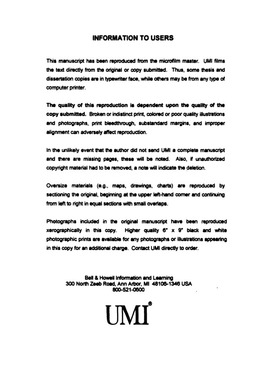| dc.contributor.advisor | Branch, David, | en_US |
| dc.contributor.author | Hatano, Kazuhito. | en_US |
| dc.date.accessioned | 2013-08-16T12:30:58Z | |
| dc.date.available | 2013-08-16T12:30:58Z | |
| dc.date.issued | 2000 | en_US |
| dc.identifier.uri | https://hdl.handle.net/11244/5999 | |
| dc.description.abstract | By using SYNOW, we show that most of the spectroscopic differences among type Ia supernovae can be explained by the temperature; therefore, the composition of most of the type Ia supernovae is essentially the same. In particular, we suggest that most of the peculiarities seen in the cool, weak, and sub-luminous type Ia supernova SN 1999 by can be explained by the temperature. Based on these suggestions, we argue that the magnitude decline rate parameter of type Ia supernovae is a good indicator of the temperature. On the other hand, this temperature sequence cannot explain the spectroscopic differences among some type Ia supernovae in which their expansion velocity inferred from their spectral features is much larger than the expansion velocity seen in other type Ia supernovae. These supernovae are called the "high-velocity" type Ia supernovae. Therefore, we show that the spectroscopic sequence among all type Ia supernovae is multi-dimensional. But, we also prove that the composition of these high-velocity supernovae is not fundamentally different from that of other type Ia supernovae. We suggest that the different explosion mechanisms and different initial conditions would cause the spectroscopic differences among type Ia supernovae. | en_US |
| dc.description.abstract | We provide a detailed comparative spectroscopic analysis of type Ia supernovae. First, in order to help line identifications in the spectra of type Ia supernovae, the LTE line optical depth of one of the strongest lines of every interesting ion is plotted against the temperature. We consider three spectral regions: optical, ultraviolet, and infrared. And, we consider six different compositions that might be seen in not only type Ia supernovae, but also in all other types of supernovae. Then, for those ions that could produce identifiable features in the optical at any temperature, we present a sample theoretical spectrum that is generated by the supernova spectrum synthetic code, SYNOW. | en_US |
| dc.format.extent | vii, 170 leaves : | en_US |
| dc.subject | Supernovae. | en_US |
| dc.subject | Physics, Astronomy and Astrophysics. | en_US |
| dc.subject | Supernovae Spectra. | en_US |
| dc.title | The direct analysis of spectra of type Ia supernovae. | en_US |
| dc.type | Thesis | en_US |
| dc.thesis.degree | Ph.D. | en_US |
| dc.thesis.degreeDiscipline | Homer L. Dodge Department of Physics and Astronomy | en_US |
| dc.note | Source: Dissertation Abstracts International, Volume: 61-06, Section: B, page: 3092. | en_US |
| dc.note | Adviser: David Branch. | en_US |
| ou.identifier | (UMI)AAI9975802 | en_US |
| ou.group | College of Arts and Sciences::Homer L. Dodge Department of Physics and Astronomy | |
